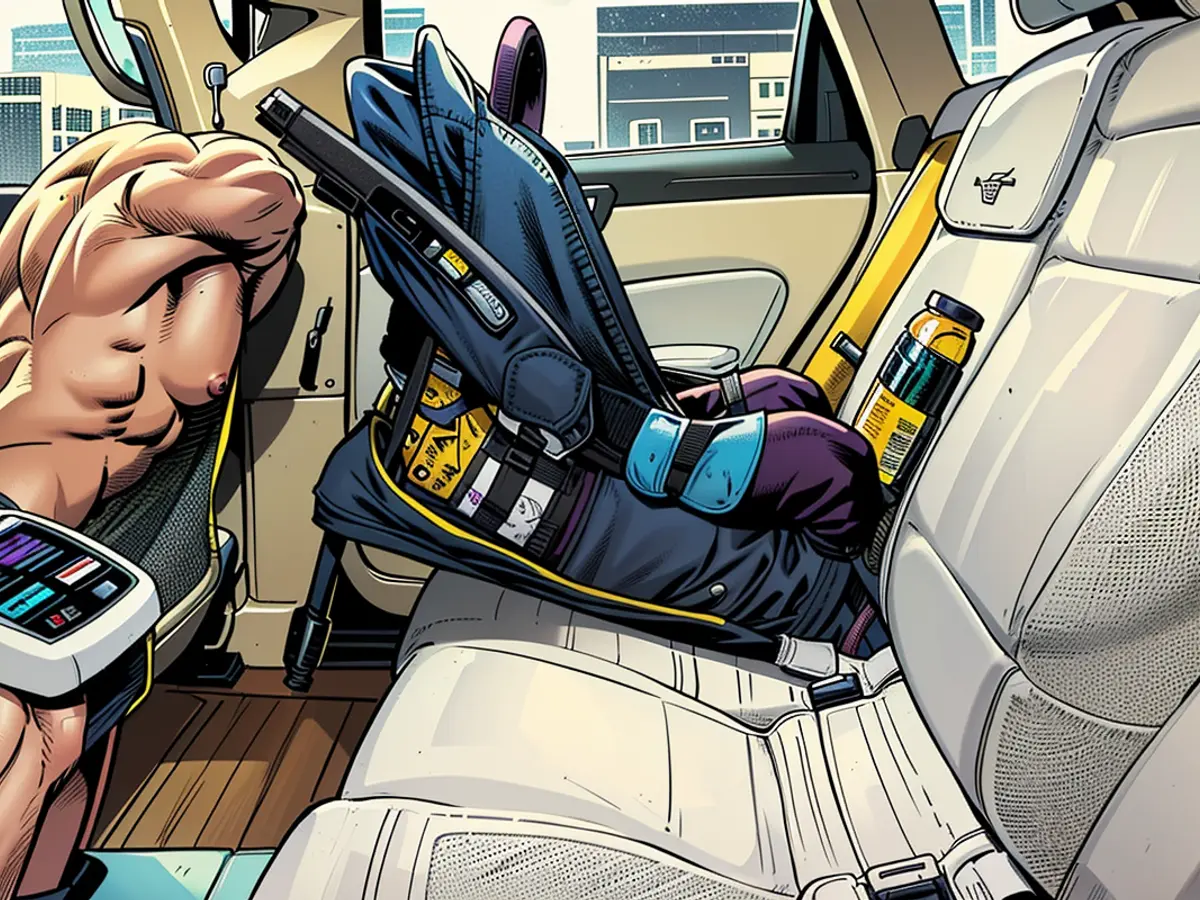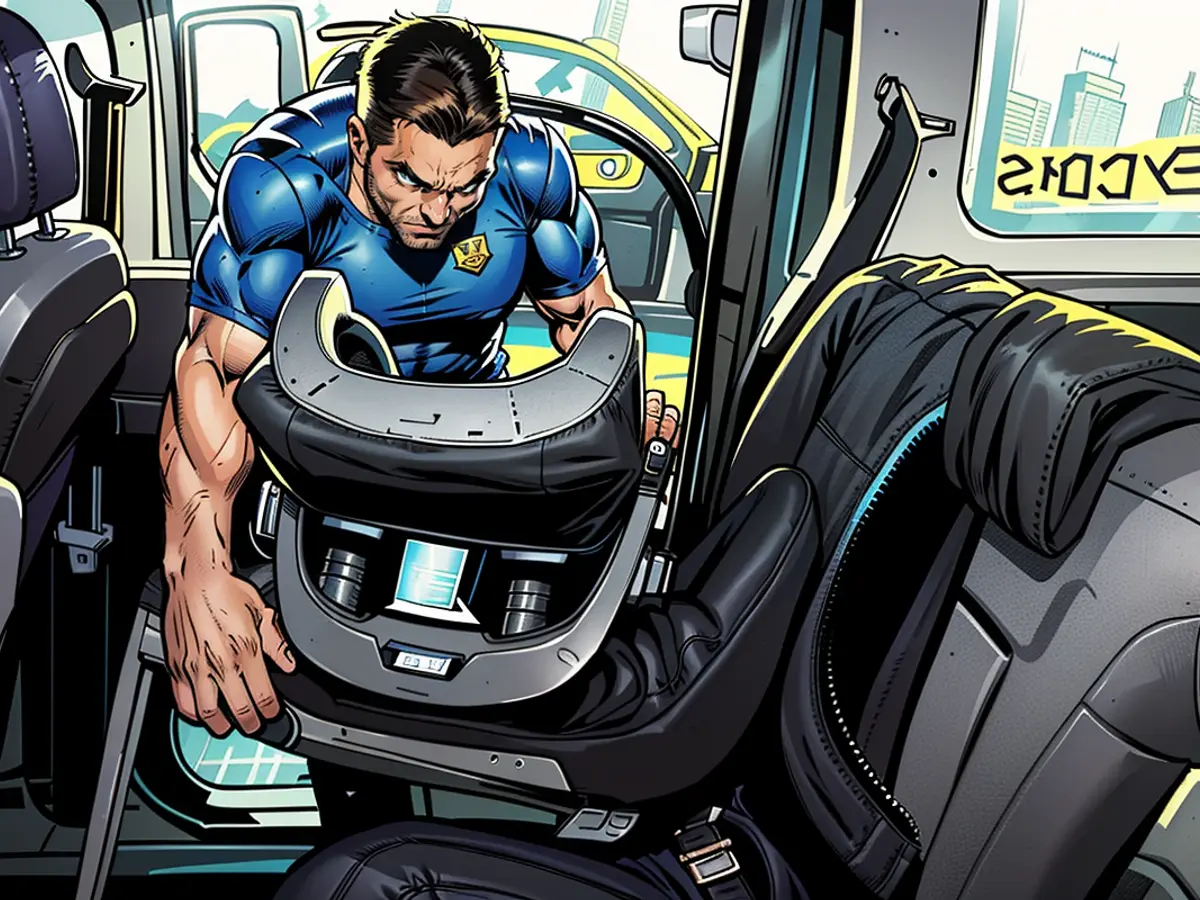In the ADAC assessment, a particular child seat falls short, labeled as "defective"
New parents and caregivers looking to transport children under 12 years old or up to 1.50 meters in height should consider a child seat. As babies grow, multiple seats might be necessary, but some models can adapt to the child's growth.
The ADAC has assessed 17 different child seats, priced from 95 to 758 euros - ranging from baby carriers to models for older children. The criteria for evaluation included safety, handling, ergonomics, and pollution levels.
In summary, most models received a "good" or "satisfactory" rating. A single baby carrier, priced at 95 euros, received a "deficient" grade due to high contamination levels of a potentially harmful substance in its fabric.
Models that performed "well" - a selection
Amongst baby carriers (for children up to about 1 year), the "Thule Maple + Alfi Base" (priced at 570 euros) scored a "good" rating (1.6). The same model sans the Isofix base also received a "good" grade (2.2) at a lower price point of 280 euros. Generally, the ADAC prefers models with an Isofix base due to reduced risks of incorrect installation.
The "Doona i + Doona i Isofix Base" (720 euros) and the "Besafe Go Beyond + Beyond Base" (678 euros) both garnered "good" ratings (1.7 and 1.8) for toddlers and babies up to about 1.5 years. The "Doona i" model, with no base, costing 530 euros, also scored a "good" grade (2.4).
Children between 1.5 to 12 years (76 to 150 cm in height) can use the "Evolvafix" (230 euros) and the "Versafix" (225 euros) manufactured by Britax Römer. Both received "good" ratings (2.5).
Amongst models for children aged around 4 to 12 years, the "Maxi-Cosi Rodifix R" (150 euros) scored a "good" rating (2.0) for its ease of use and light weight (5.8 kg).

Safest travel - facing backward
The ADAC recommends keeping children in rear-facing seats as long as possible. It is best not to switch to forward-facing seats before the age of 2. In the event of a frontal collision, the head and upper body remain immobilized in a rear-facing seat. The entire body is supported, and pressure is evenly distributed across the seat.
Child seats and cars should be tested to determine the best fit. Installation practice should be done prior to the first transport, and the harness should be securely fastened according to instructions. Thick jackets or anoraks should be avoided, as they can lead to excess slack.
KBA warns against unauthorized universal Isofix adapters
The number of seats compatible with Isofix mountings in cars is on the rise. However, retailers must not install universal Isofix adapters, as this practice is illegal and dangerous. In October, the Federal Motor Transport Authority (KBA) issued a warning regarding such unauthorized universal Isofix adapters for securing child seats and baby carriers in vehicles. These are sold by various providers, mostly located outside the European Union, on online marketplaces.
Isofix anchorages in vehicles need to comply with UN regulation No. 145 and obtain vehicle-specific approval. The ADAC advises against retrofitting Isofix mounting points if the vehicle manufacturer does not offer corresponding spare parts.
In the evaluation of various child seats, motor vehicles equipped with Isofix anchorages were considered. Parents and caregivers who use such vehicles may find compatible models like the "Thule Maple + Alfi Base" or the "Maxi-Cosi Rodifix R" for children of different ages. It's important to note that installing universal Isofix adapters is illegal and dangerous, as warned by the KBA.









